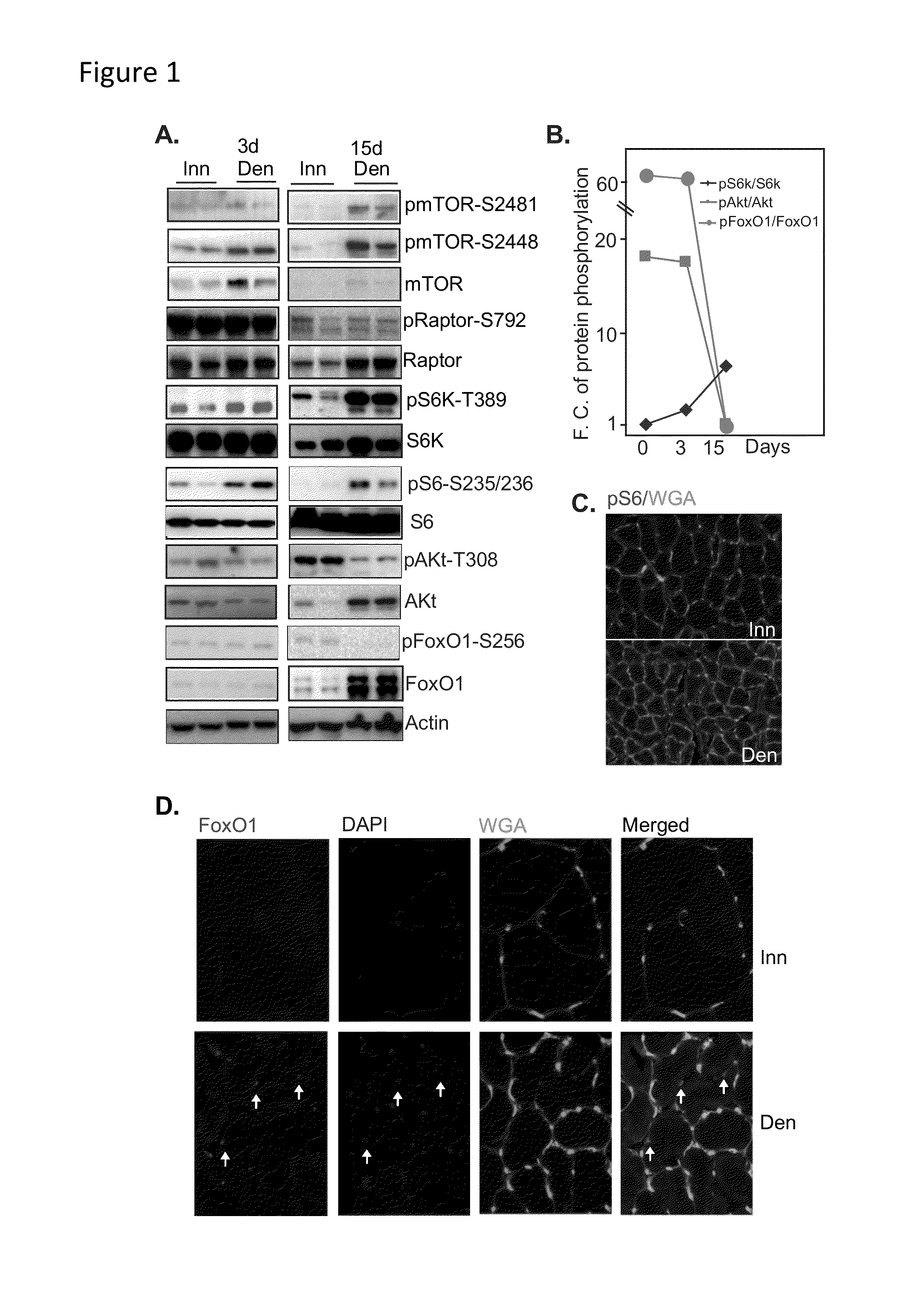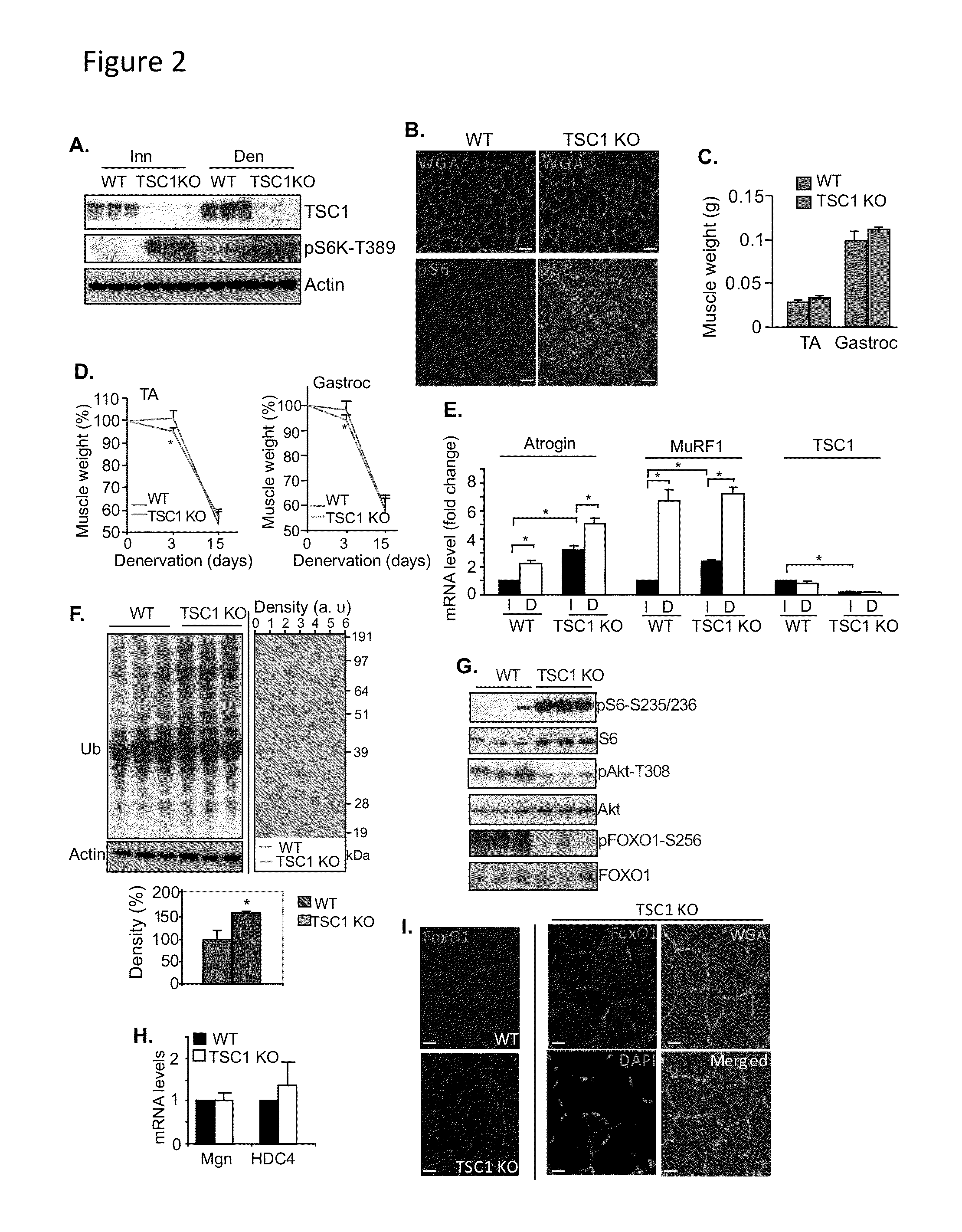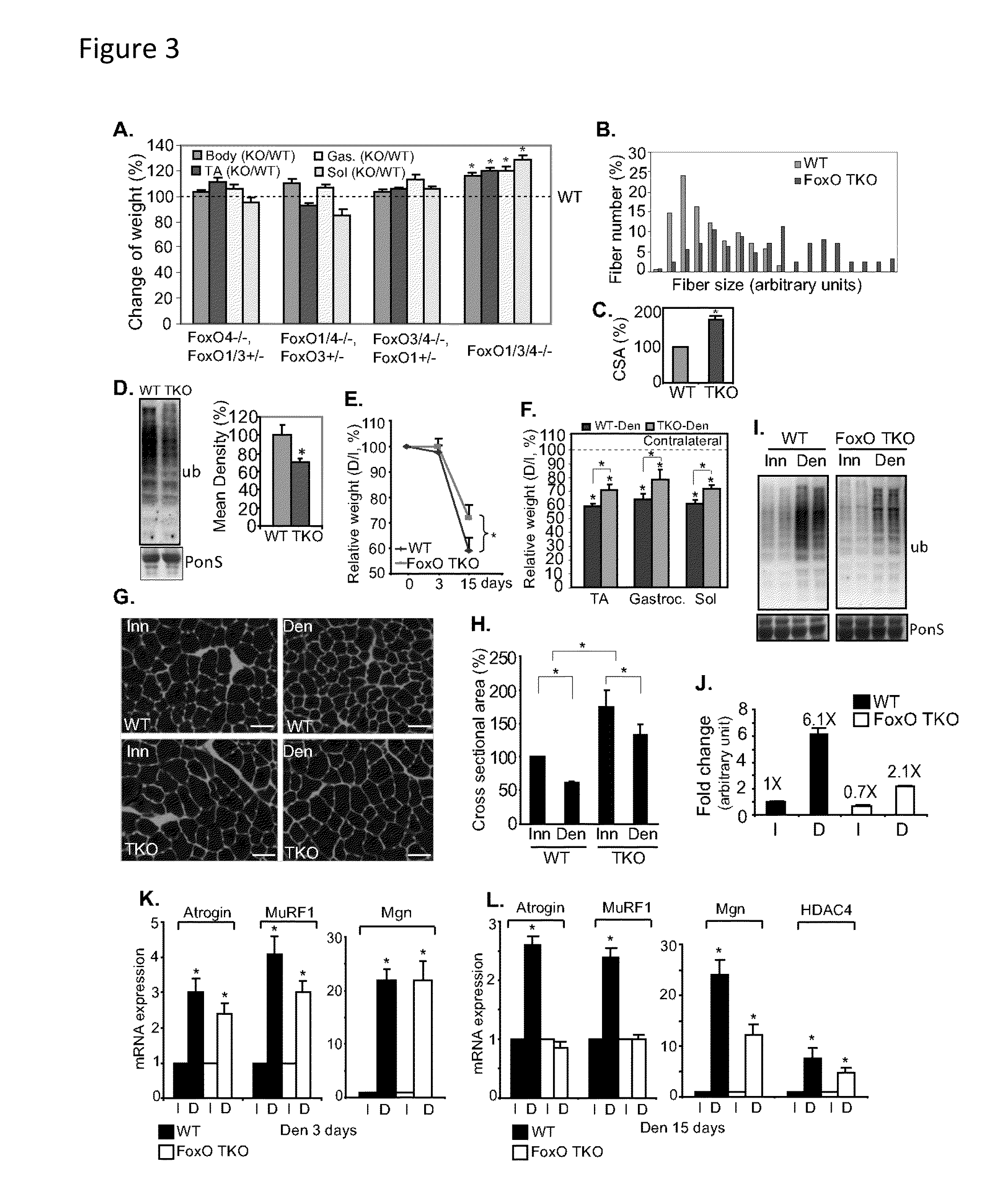Methods for treating denervation-induced muscle atrophy
- Summary
- Abstract
- Description
- Claims
- Application Information
AI Technical Summary
Benefits of technology
Problems solved by technology
Method used
Image
Examples
example 1
mTORC1-S6K and Akt-FoxO Signaling Pathways are Reciprocally Regulated in Denervated Muscle
[0117]To investigate the possible involvement of the mTORC1 pathway in denervation muscle atrophy, mTORC1 activity was examined 3 days (designated as early) and 15 days (designated as late) after denervation in normal mouse hindlimb. Three days post-denervation, Western blot analysis indicated that the phosphorylation of some of the components in the mTORC1 pathway, such as mTOR, S6K and S6, was moderately increased, indicating a mild activation of mTORC1 pathway, whereas the phosphorylation and activity of Akt and FoxO1 remained unchanged (FIG. 1A, left panels). In muscle 15 days after denervation, the phosphorylation of mTORC1 and of two of its downstream effectors (S6K and S6) was markedly increased. At this later time point, the phosphorylation of Akt and FoxO1 was reduced compared to that in innervated muscle (FIG. 1A, right panels). The total protein abundance of the mTORC1 components mTO...
example 2
Constitutively Active mTORC1 Sensitizes Muscle to, Rather than Prevents, Denervation-Induced Skeletal Muscle Atrophy
[0118]Because mTORC1 activation is thought to generally increase protein synthesis (Bodine et al., 2001b; Wang & Proud, 2006), the inventors of the present application hypothesized initially that the induction of mTORC1 activity in denervated muscle would serve as a compensatory mechanism directed toward preventing muscle atrophy. To test this concept, a mouse model of mTORC1 overactivity was established by deleting the endogenous mTORC1 inhibitor, TSC1, in a muscle-specific manner. Specifically, as described supra under Experimental Procedures, muscle-specific TSC1 KO mice were generated by breeding floxed TSC1 mice (TSC1L / L) with MCK-Cre mice, where Cre was under the control of muscle-specific creatine kinase. The Cre− counterparts served as control.
[0119]As can be seen in FIGS. 2 A, B & E, the resulting TSC1 KO mice showed increased mTORC1 activity in skeletal muscl...
example 3
Constitutively Active mTORC1 is Sufficient to Activate FoxO and the Ubiquitin-Proteasome System by Suppressing Akt in Skeletal Muscle
[0120]Consistent with the induction of E3 ubiquitin ligases (FIG. 2E), the extent of protein ubiquitination was also significantly induced in the TSC1 KO skeletal muscle, ˜150% of the total protein ubiquitination in wild-type skeletal muscle (FIG. 2F). TSC1 KO muscle showed increased phosphorylation of S6 but reduced phosphorylation of Akt and FoxO1 (FIG. 2G), similar to the phosphorylation patterns in denervated muscle (FIG. 1A). Like FoxO, the HDAC4-myogenin pathway can increase expression of genes encoding E3 ubiquitin ligases (Moresi et al., 2010; MacPherson et al., 2011), but no changes were observed in the gene expression of myogenin or HDAC4 in TSC1 KO muscle (FIG. 2H). Immunostaining revealed that FoxO1 protein accumulated in TSC1 KO muscle and co-localized with nuclei, suggesting that FoxO1 is translocated into myonculei with mTORC1 activation...
PUM
 Login to View More
Login to View More Abstract
Description
Claims
Application Information
 Login to View More
Login to View More - R&D
- Intellectual Property
- Life Sciences
- Materials
- Tech Scout
- Unparalleled Data Quality
- Higher Quality Content
- 60% Fewer Hallucinations
Browse by: Latest US Patents, China's latest patents, Technical Efficacy Thesaurus, Application Domain, Technology Topic, Popular Technical Reports.
© 2025 PatSnap. All rights reserved.Legal|Privacy policy|Modern Slavery Act Transparency Statement|Sitemap|About US| Contact US: help@patsnap.com



